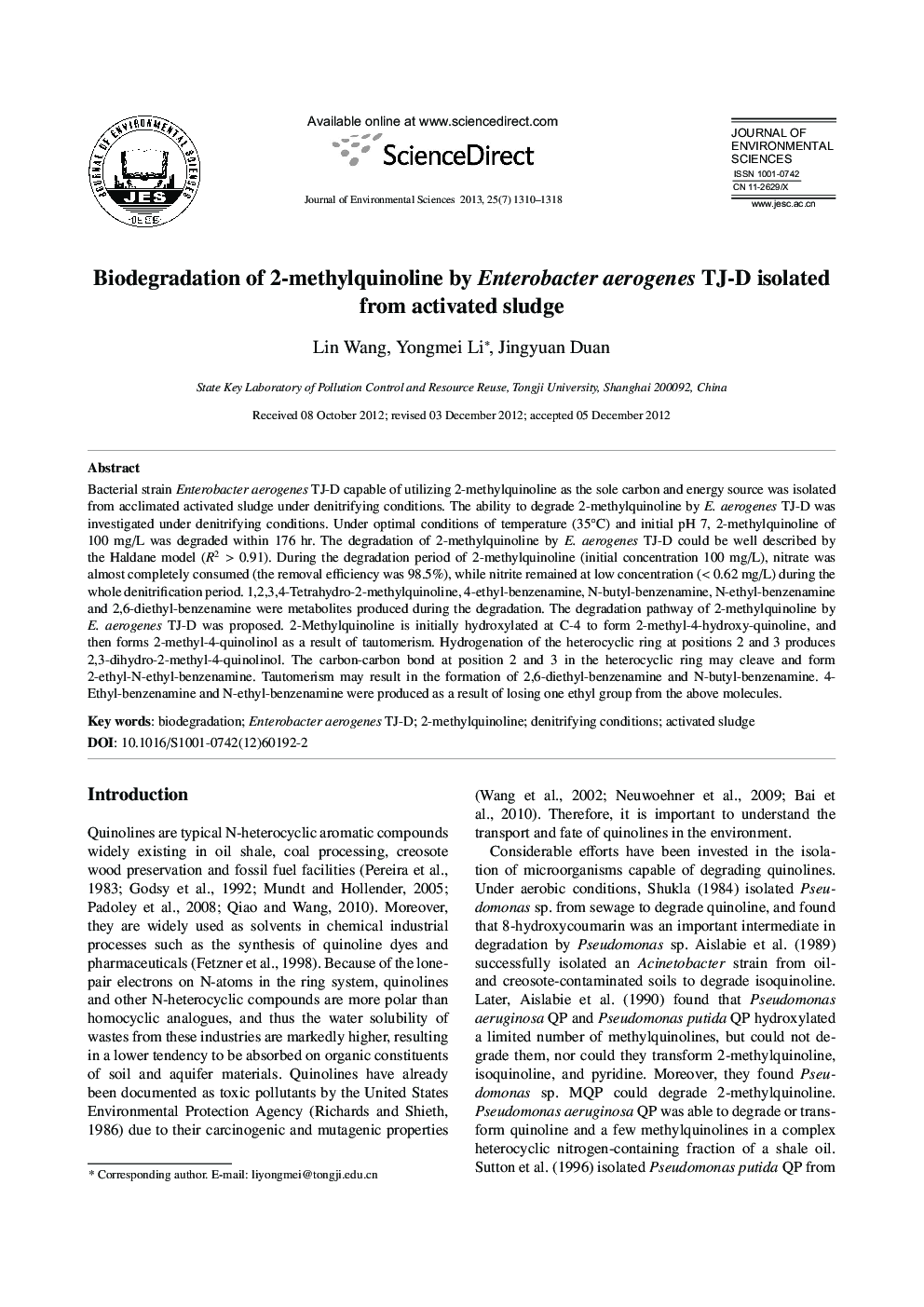| Article ID | Journal | Published Year | Pages | File Type |
|---|---|---|---|---|
| 4454840 | Journal of Environmental Sciences | 2013 | 9 Pages |
Bacterial strain Enterobacter aerogenes TJ-D capable of utilizing 2-methylquinoline as the sole carbon and energy source was isolated from acclimated activated sludge under denitrifying conditions. The ability to degrade 2-methylquinoline by E. aerogenes TJ-D was investigated under denitrifying conditions. Under optimal conditions of temperature (35°C) and initial pH 7, 2-methylquinoline of 100 mg/L was degraded within 176 hr. The degradation of 2-methylquinoline by E. aerogenes TJ-D could be well described by the Haldane model (R2 > 0.91). During the degradation period of 2-methylquinoline (initial concentration 100 mg/L), nitrate was almost completely consumed (the removal efficiency was 98.5%), while nitrite remained at low concentration (< 0.62 mg/L) during the whole denitrification period. 1,2,3,4-Tetrahydro-2-methylquinoline, 4-ethyl-benzenamine, N-butyl-benzenamine, N-ethyl-benzenamine and 2,6-diethyl-benzenamine were metabolites produced during the degradation. The degradation pathway of 2-methylquinoline by E. aerogenes TJ-D was proposed. 2-Methylquinoline is initially hydroxylated at C-4 to form 2-methyl-4-hydroxy-quinoline, and then forms 2-methyl-4-quinolinol as a result of tautomerism. Hydrogenation of the heterocyclic ring at positions 2 and 3 produces 2,3-dihydro-2-methyl-4-quinolinol. The carbon-carbon bond at position 2 and 3 in the heterocyclic ring may cleave and form 2-ethyl-N-ethyl-benzenamine. Tautomerism may result in the formation of 2,6-diethyl-benzenamine and N-butyl-benzenamine. 4-Ethyl-benzenamine and N-ethyl-benzenamine were produced as a result of losing one ethyl group from the above molecules.
